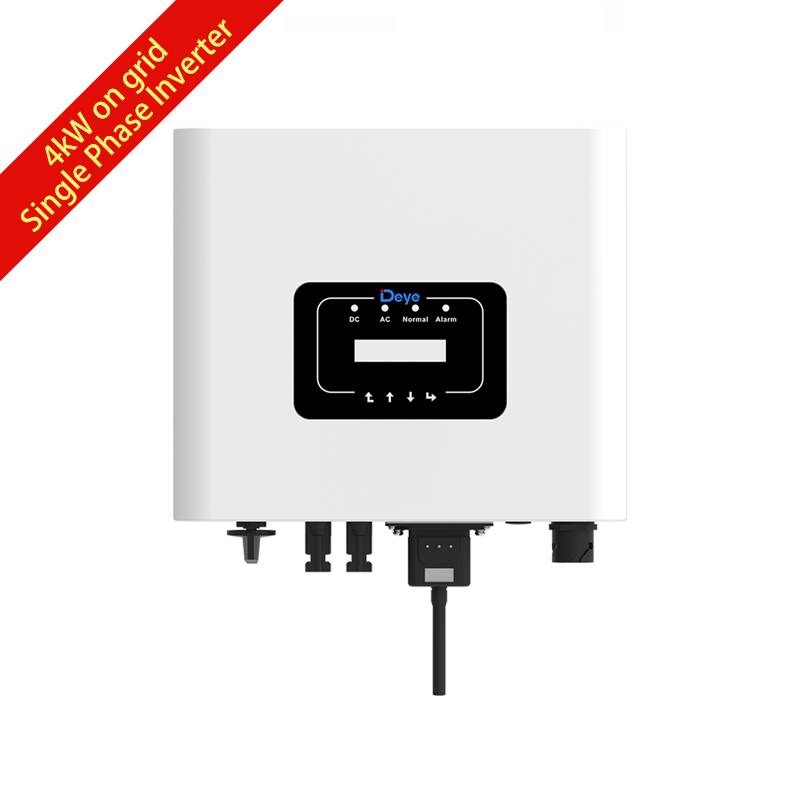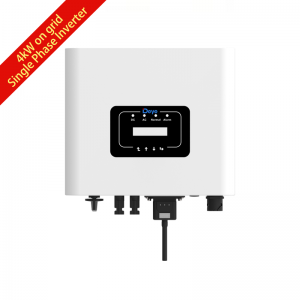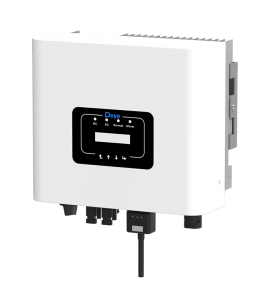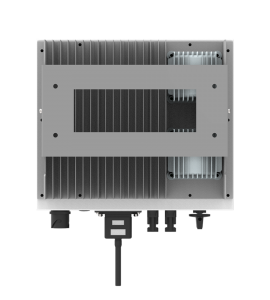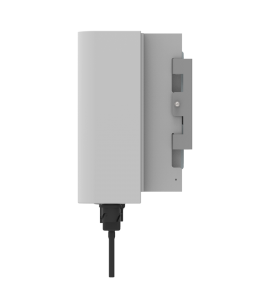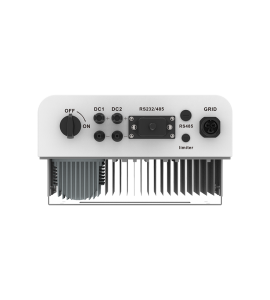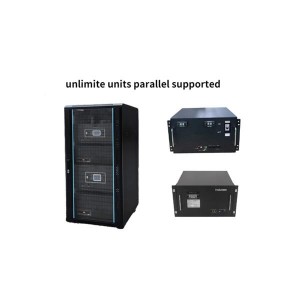

Deye 4kW Single Phase On Grid Solar Photovoltaic Inverter
ABOUT
Deye 4kW Single Phase On Grid Solar Photovoltaic Inverter
| Model | SUN-4K-G |
| Input Side | |
| Max. DC Input Power(kW) | 5.2 |
| Max. DC Input Voltage (V) | 550 |
| Start-up DC Input Voltage(V) | 80 |
| MPPT Operating Range(V) | 70-550 |
| Max. DC Input Current(A) | 13+13 |
| Max. Short Circuit Current (A) | 19.5+19.5 |
| Number of MPPT/Strings per MPPT | 2/1 |
| Output Side | |
| Rated Output Power(kW) | 4 |
| Max. Active Power(kW) | 4.4 |
| Rated AC Grid Voltage(V) | L/N/PE 220 / 230 (optional) |
| AC Grid Voltage Range(V) | 180Vac~300Vac(this may vary with grid standards) |
| Rated Grid Frequency(Hz) | 50 / 60 (Optional) |
| Operating Phase | Single phase |
| Rated AC Grid Output Current(A) | 18.2/17.4 |
| Max. AC Output Current(A) | 20/19.1 |
| Output Power Factor | 0.8 leading to 0.8 lagging |
| Grid Current THD | <3% |
| DC Injection Current(mA) | <0.5% |
| Grid Frequency Range | 47~52 or 57~62 (Optional) |
| Efficiency | |
| Max.Efficiency | 97.50% |
| Euro Efficiency | 97.30% |
| MPPT Efficiency | >99% |
| Protection | |
| DC Reverse-Polarity Protection | Yes |
| AC Short Circuit Protection | Yes |
| AC Output Overcurrent Protection | Yes |
| Output Overvoltage Protection | Yes |
| Insulation Resistance Protection | Yes |
| Ground Fault Monitoring | Yes |
| Abti-islanding Protection | Yes |
| Temperature Protection | Yes |
| Integrated DC Switch | Yes |
| Remote software upload | Yes |
| Remote change of operating parameters | Yes |
| Surge protection | DC Type II / AC Type II |
| General Data | |
| Size(mm) | 330W×323H×190D |
| Weight(kg) | 7.5 |
| Topology | Transformerless |
| Internal Consumption | <1W(Night) |
| Running Temperature | -25~65℃,>45℃ derating |
| Ingress Protection | IP65 |
| Noise Emission(Typical) | <35 dB |
| Cooling Concept | Natural cooling |
| Max. Operating Altitude Without Derating | 2000m |
| Designed Lifetime | 5years |
| Grid Connection Standard | VDE4105, IEC61727/62116, VDE0126, AS4777.2, CEI 0 21, EN50549-1, G98, G99, C10-11, UNE217002, NBR16149/NBR16150 |
| Operating Surroundings Humidity | 0-100% |
| Safety EMC/Standard | IEC/EN 61000-6-1/2/3/4, IEC/EN 62109-1, IEC/EN 62109-2 |
| Features | |
| DC Connection | MC-4 mateable |
| AC Connection | IP65 rated plug |
| Display | LCD 1602 |
| Interface | RS485/RS232/Wifi/LAN |
The main technical parameters of solar photovoltaic inverters are:
1. Rated output voltage
The solar photovoltaic inverter should be able to output the rated voltage value within the allowable fluctuation range of the specified input DC voltage. Generally, when the rated output voltage is single-phase 220v and three-phase 380v, the voltage fluctuation deviation has the following regulations.
(1) When running in a steady state, it is generally required that the voltage fluctuation deviation does not exceed ±5% of the rated value.
(2) When the load changes suddenly, the voltage deviation does not exceed ±10% of the rated value.
(3) Under normal working conditions, the three-phase voltage unbalance degree output by the solar photovoltaic inverter should not exceed 8%.
(4) The voltage waveform (sine wave) distortion of three-phase output is generally required to be no more than 5%, and that of single-phase output is no more than 10%.
(5) The deviation of the frequency of the AC voltage output by the inverter should be within 1% under normal working conditions. The output voltage frequency specified in the national standard gb/t 19064-2003 should be between 49 and 51 hz.
2. Load power factor
The size of the load power factor indicates the ability of the inverter to carry inductive load or capacitive load. Under the condition of sine wave, the load power factor is 0.7~0.9, and the rated value is 0.9. Under the condition of a certain load power, if the power factor of the inverter is low, the capacity of the required inverter will increase, resulting in an increase in cost. At the same time, the apparent power of the AC circuit of the photovoltaic system increases and the loop current increases. Large, the loss will inevitably increase, and the system efficiency will also decrease.
3. Rated output current and rated output capacity
The rated output current refers to the rated output current of the inverter within the specified load power factor range, and the unit is a; the rated output capacity refers to the rated output of the inverter when the output power factor is 1 (that is, purely resistive load). The product of voltage and rated output current, in kva or kw.
